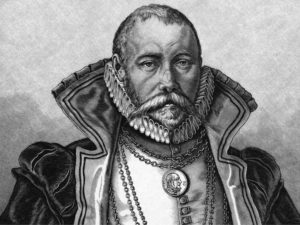
During the 16th century, as the Copernican model of the universe became increasingly accepted, astronomers focused their attention on producing more precise measurements of the stars and planets. The greatest observer of this per-telescopic era was Tycho Brahe (1546 – 1601), born to a Danish noble family, where he rejected a career in politics and instead dedicated his life to astronomy after witnessing a solar eclipse in 1560 that hooked his attention to the sky.
Brahe is best known for his meticulous astronomical observations that he recorded in his observatory granted to him by King Frederick II, on the island of Hven (now called Ven) near Copenhagen. The observatory had some of the finest instruments of the time, its own printing press, was a frequent destination of visiting scholars, and became a training station of a generation of young astronomers.
The completeness and accuracy of his observations cemented his legacy as one of the greatest astronomers of his era. The breadth of data compiled in the observatory is no small feat – he accurately plotted the position of nearly 800 stars all without the assistance of a telescope. Famously, the observational data compiled at the observatory assisted Johannes Kepler in calculating the elliptical orbits of the planets.